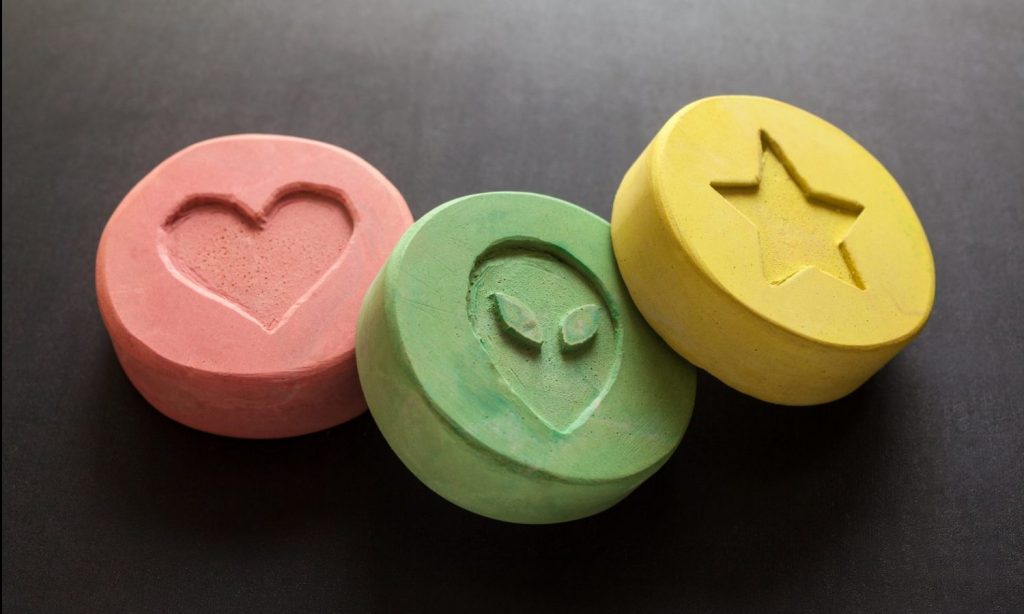Phase III testing is critically important for the legalization of prescription MDMA. In this phase, scientists evaluate how it compares to existing medications that treat PTSD such as Prozac, Zoloft, and Paxil.
By Andrew Smith
Efforts by the Multidisciplinary Association for Psychedelic Studies (MAPS) to legalize prescription MDMA (Ecstasy) appear to have passed a gigantic hurdle earlier this month: MDMA is on track to meet the testing requirements to be a legalized prescription drug, specifically intended to treat the symptoms of post-traumatic stress disorder (PTSD).
After analyzing the preliminary results of the latest Phase III study of the effects of MDMA, scientists believe that MDMA represents a potential breakthrough in PTSD treatment. This is huge news because FDA has only approved a few antidepressants to treat PTSD, and about half of patients get no relief from those drugs.

According to analysis by an FDA-coordinated independent data monitoring company (DMC) — which reviewed MAPS’ Phase III data after 60% of the subject completed the study — there is at least a 90% chance that the Phase III testing will yield statistically significant results once all participants have been treated. The results of the study were published last week in Nature Medicine, a prestigious trade journal.
So, how did the study work? Scientists used a randomized, placebo-controlled study with 90 participants suffering from severe PTSD. They found that MDMA significantly reduced PTSD symptoms and functional impairment. Specifically, 67% of patients improved enough to no longer satisfy the diagnostic criteria for PTSD, and a third experienced complete remission. Furthermore, MDMA did not induce adverse events of abuse potential, suicidal idealization or attempts, or QT prolongation. Ultimately, the results of the study indicate that MDMA-assisted therapy is highly efficacious in those with severe PTSD, and that MDMA treatment is safe.
Phase III testing is critically important for the legalization of prescription MDMA. In this phase, scientists evaluate how MDMA compares to existing medications that treat PTSD such as Prozac, Zoloft, and Paxil. Phase III is also a considerable step up from Phase I and Phase II; Phase I trials examine the safety of the drug but not the efficacy of the drug in humans, and Phase II trials study whether the drug actually treats PTSD in conjunction with talk therapy.
RELATED: MDMA On Cusp Of FDA Approval
The study results are a huge victory for Rick Doblin in particular, who has spent more than 30 years advocating for psychedelic drug use to treat emotional trauma (sometimes, Doblin refers jokingly to MAPS as “the world’s oldest start-up”). Founded by Doblin in 1986, MAPS is a nonprofit based in San Jose, California that is committed to attracting funding and seeing MDMA through the Food and Drug Administration (FDA) drug approvals process. Since then, MAPS has guided MDMA through various regulatory obstacles and investors have contributed lots of money to study the efficacy of MDMA in treating PTSD. Just last August, MAPS announced that it had raised $30 million to complete this first Phase III MDMA study.

MAPS is preparing for a sprint to the finish line, aiming for FDA approval in 2022 and drug commercialization in 2023. The biggest challenge between now and then for MAPS likely will be raising a few hundred million more to complete a second Phase III study, move into drug production, and train therapists around the world to administer treatment.
RELATED: Legal MDMA-Assisted Therapy For PTSD Likely By 2022
We have been following MAPS and predicting the success of this treatment regime for a while now, and we were excited to see these results and follow the progression of MDMA towards legalization. It could also pave the way for approvals of other psychedelic drugs in the FDA channel, as we’ve been covering on this blog for the past three years.
This article originally appeared on Canna Law Blog and has been reposted with permission.


